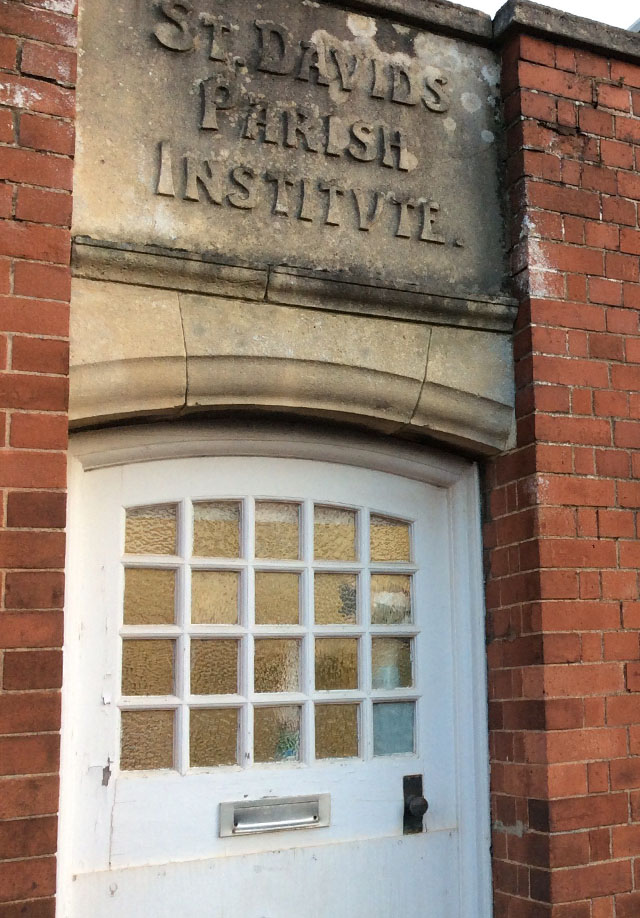Community researcher – Jane Chappell
The foundation stone records that the present building was opened in 1905 by Exeter’s mayor. This followed the opening of the newly rebuilt St David’s Church in 1900, in similar Art Nouveau style. Thanks to a large legacy from Richard Bowerman West of Streatham Hall, this new building, for the Guild of St David’s and St Michael’s, provided a library, reading rooms, board games and lectures for members after their day’s work. It later became St David’s Working Men’s Club.
The separate Guilds of St David’s and St Michael’s had been formed in the 1870s for their congregations and run by committee. Membership criteria was strictly church-related.
Members had to attend church regularly, and take part in constructive church activities like choir, Sunday School teaching, bible rebinding and spreading the church’s message in the community.
Good behaviour was mandatory. Swearing and gambling were strictly prohibited and books and newspapers had to be approved by the committee. Membership benefits included scope to improve learning, enjoying occasional outings, and access to the Exeter Savings Bank. The Guild could award financial help to members in need. Most of the local working population had minimal means in Exeter’s static economy at that time.
From 1902, the Institute allowed women more active roles. St David’s Mothers Union was established. Their Maternity Society started a Clothing Club to provide needy worshippers with small supplies of coal, food and baby linen. By 1918, the Mother’s Union, Boy Scouts and Girl Guides were all based at the Institute. During the First World War the Institute was used as a Military Clothing Store. After the war, it continued to be used as a Working Men’s Club, with an emphasis on secular rather than religious objectives. Now, the Institute is used by the adjacent St Wilfred’s School.
